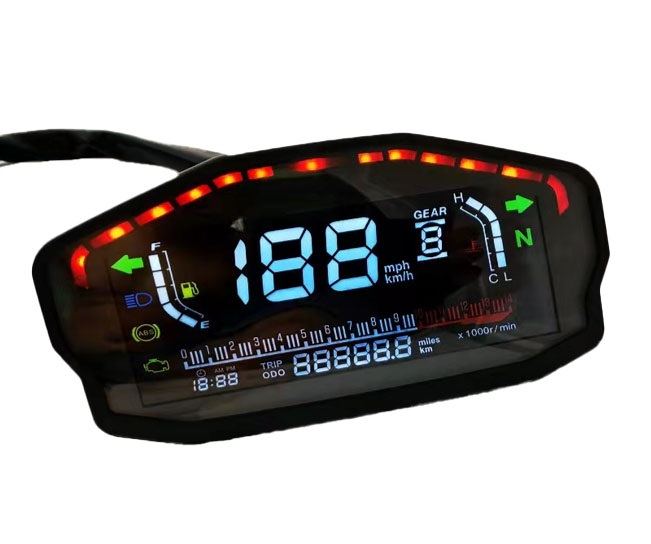
While motorcycle instrument clusters provide critical real-time ride data, slight deviations between displayed values and actual measurements exist due to precision variations.
Motorcycle Instrument Cluster Accuracy: Understanding Speed vs. Odometer Data
While motorcycle instrument clusters provide critical real-time ride data, slight deviations between displayed values and actual measurements exist due to precision variations.
Speedometer Variance
Speed readings typically show a ~10% optimistic margin compared to true velocity—a phenomenon colloquially termed "speedo error" in riding communities. This intentional calibration accounts for safety margins and sensor limitations.
Odometer Reliability
In contrast, mileage calculations maintain near-actual accuracy (±1.5%) through direct measurement:
-
Mechanical Systems: Track front wheel rotations via cable-driven counters
-
Digital Systems: Use magnetic/Hall-effect sensors to monitor wheel RPM
Measurement Principle
Both systems calculate distance using the formula:
Total Distance = Wheel Rotations × Circumference
Standard configurations preset circumference values based on OEM tire specs (e.g., 120/70R17).
Critical Error Factors
|
Scenario
|
Error Impact
|
|
Tire Wear
|
3mm tread reduction = +0.8% odometer overread
|
|
Aftermarket Tires
|
10% size deviation = 10% mileage discrepancy
|
|
Sensor Misalignment
|
Improper wheel gap causes ±5% signal loss
|
Technical Recommendation
Always recalibrate clusters when changing tire sizes using:
-
Manufacturer-specific diagnostic tools
-
GPS-verified adjustment coefficients (ISO 8608:2022 compliant)
This engineering-focused explanation maintains technical credibility while guiding users through key accuracy considerations. For calibration services, visit our [Technical Support Portal] .
(Optimized for: "motorcycle speedometer accuracy", "odometer calibration", "tire size effect on mileage")